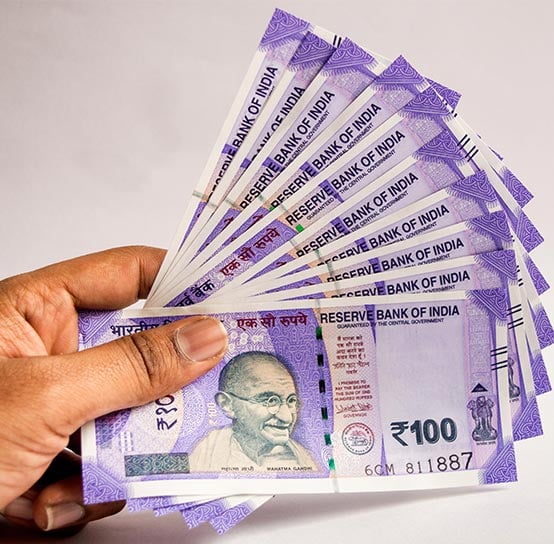-
Digital Natives
Unlock growth with Grant Thornton Bharat's Digital Natives solutions. Customised support for tech-driven companies in healthcare, gaming, and more.
-
Business Consulting
Our business consulting specialists offer a comprehensive blend of strategic advisory services. We assess the business, industry, operating model, synergy, skill sets and vision of the organisation and recommend the way forward
-
Digital Transformation Services
Grant Thornton’s digital transformation services help traditional businesses digitalise their business models with cloud technology, IoT consulting, app development and more DigiTech solutions.
-
Human Capital Consulting
Our Human Capital Consulting team harnesses technology and industry expertise to assist in constructing adaptable organisations with transparency, fostering productive and value-driven workforces, and inspiring employees to engage meaningfully in their tasks.
-
Production Linked Incentive Scheme
Production-linked Incentive Scheme by the Indian government is aimed at boosting manufacturing. Grant Thornton Bharat offers varied services across sectors to help businesses avail of this scheme.
-
Public Sector Advisory
Our Public Sector Advisory team has focused streams, aligned with the core priorities of the Government of India. We are responsible for providing innovative and customized technical and managerial solutions.
-
Tech Advisory
We have amalgamated Digital Transformation, IT Advisory & Information Management and Analytics into a new offering, DigiTech.
-
Direct Tax services
Our tax specialists offer a comprehensive blend of tax services, tax litigation, regulatory and compliance services, helping you navigate through complex business matters.
-
Indirect Tax Services
Get tax services by leading tax firm Grant Thornton India. Our indirect tax services include consulting, compliance and litigation services for corporate, international and transaction tax
-
Transfer pricing services
Our transfer pricing services experts provide a range of services from provision of APA services to handling large global assignments including Country by Country reporting.
-
US Tax
At Grant Thornton, we help individuals and dynamic companies deal with US tax laws, which are one of the most complicated tax legislations across the world.
-
Financial Services - Tax
Best financial advisory services, tailored for small and large businesses by the experts having comprehensive knowledge of domestic laws and access to multifaceted tools to provide a valuable results.
-
Financial Reporting consulting services
Our experts have significant hands-on experience in providing IFRS/US GAAP services, end-to-end solutions and support services to fulfil financial reporting requirements.
-
Fund accounting and financial reporting
International operations often lack standardisation and have varied local reporting formats and requirements. Our experts can offer proactive insights, practical guidance, and positive progress and help meet regulatory timeframes.
-
Compliance and Secretarial Services
Our experts can assist in overhauling the entire compliance machinery of the organisation through evaluation of the applicable statutory obligations, monitoring of adequate governance controls, reporting and providing ongoing support.
-
Global People Solutions
As businesses transcend borders, both domestic and global considerations need equal attention. Our interim CFO and financial controller support services help organisations meet the business vision.
-
Finance and accounting outsourcing
Our accounting experts assist organisations in managing their accounting and reporting. Our dedicated Integrated Knowledge and Capability Centre (IKCC), allows us to service both the domestic and global markets efficiently and cost-effectively
-
Compliance Management System
We have automation solutions for you that will allow meeting government requirements and remain diligent, which when failed, can lead to penalties and loss in revenue.
-
IKCC: Grant Thornton's Shared Service Centre
The India Knowledge and Capability Centre (IKCC), aimed at delivering solutions by developing capabilities, has completed four years of its journey.
-
Global compliance and reporting solutions
At Grant Thornton Bharat, we meet the challenges of our clients and help them unlock their potential for growth. Our professionals offer solutions tailored to meet our clients’ global accounting and statutory reporting requirements. With first-hand experience of local reporting requirements in more than 145+ locations worldwide, we provide seamless and consistent international service delivery through a single point of contact.
-
Related Party Transactions Governance
Grant Thornton Bharat's comprehensive related-party transaction services ensure good governance by adhering to regulatory requirements, promoting transparency, and providing robust policies for compliance, documentation, and accountability in related-party transactions.
-
Family Offices & Private Client Services
Grant Thornton Bharat Private Client Services offers tailored advisory for family-owned businesses, focusing on governance, compliance, tax, succession planning, and family office structuring to sustain wealth and preserve legacies across generations.
-
GTMitra: Tax & Regulatory Tool
GTMitra, a specialised tax and regulatory tool by Grant Thornton Bharat, supports multinational businesses in understanding laws and regulations for effective growth strategies.
-
Labour codes
Labour codes solutions help you transition through the new legislation. At Grant Thornton, we help businesses divide their approach to make sure a smooth transition.
-
Alerts
At Grant Thornton India, with the help of our tax alerts, we help to provide updates on how to minimise your tax exposure and risks.
-
Unlocking opportunities: India investment roadmap
The India Investment Roadmap resource is designed to navigate the complexities of Indian tax and regulatory laws, providing seamless guidance and a comprehensive set of solutions to ensure a smooth process for investors aiming to establish or expand their presence in India.

-
Cyber
In today’s time, businesses have gone through large transformation initiatives such as adoption of digital technologies, transition to cloud, use of advanced technologies et al.
-
Governance, Risk & Operations
Our Governance, Risk and Operations (GRO) services encompass Internal Audit, Enterprise Risk Management, Internal Financial Controls, IT advisory, Standard Operating Procedures and other services.
-
Risk analytics
Grant Thornton Bharat’s CLEARR Insights is a state-of-the art data analytics platform that will help you in seamless data analysis and efficient decision-making.
-
Forensic & Investigation Services
The team of forensic advisory services experts consists of the best intelligence corporate experts, and fraud risk, computer forensic experts to deliver most effective solutions to dynamic Indian businesses.
-
ESG consulting
Grant Thornton Bharat offers holistic ESG consulting solutions for sustainable business outcomes. With industry expertise and AI technology, we drive long-term value.

-
Transaction Tax Services
Our transaction tax experts understand your business, anticipate your needs and come up with robust tax solutions that help you achieve business objectives ensuring compliance and efficiency
-
Deal Advisory
Unlike other M&A advisory firm in India, we offer deal advisory services and work exclusively with controlled and well-designed strategies to help businesses grow, expand and create value.
-
Due Diligence
Grant Thornton’s financial due diligence services are aimed at corporate looking for mergers and acquisitions, private equity firms evaluating investments and businesses/promoters considering sale/divestment.
-
Valuations
As one of the leading valuation consultants in India, Grant Thornton specializes in all the aspects of the process like business valuation services, financial reporting, tax issues, etc.
-
Overseas Listing
Overseas listing presents a perfect platform for mid-sized Indian companies with global ambitions. Grant Thornton’s team of experts in listings, work closely with clients during all stages.
-
Debt & Special Situations Solutions
Grant Thornton Bharat offers specialist debt and special situations consulting services, including restructuring, insolvency, and asset tracing solutions.
-
Financial Reporting Advisory Services
Grant Thornton Bharat Financial Reporting Advisory Services offer end-to-end solutions for complex financial requirements, including GAAP conversions, IPO support, and hedge accounting advisory, ensuring accurate financial reporting and compliance.
-
Financial Statement Audit and Attestation Services
Grant Thornton Bharat offers customised financial statement audit and attestation services, ensuring impeccable quality and compliance with global standards. Our partner-led approach, technical expertise, and market credibility ensure effective solutions for your business needs.

- Agriculture
- Asset management
- Automotive and EV
- Aviation
- Banking
- Education and ed-tech
- Energy & Renewables
- Engineering & industrial products
- FinTech
- FMCG & consumer goods
- Food processing
- Gaming
- Healthcare
- Urban infrastructure
- Insurance
- Media
- Medical devices
- Metals & Mining
- NBFC
- Pharma, bio tech & life sciences
- Real estate and REITs
- Retail & E-commerce
- Specialty chemicals
- Sports
- Technology
- Telecom
- Transportation & logistics
- Tourism & hospitality
-
 Article Navigating market volatility and government support for Indian agricultureIndia's agricultural sector, the backbone of the nation's economy, contributes ~17% to the GDP and employs over half of the workforce.
Article Navigating market volatility and government support for Indian agricultureIndia's agricultural sector, the backbone of the nation's economy, contributes ~17% to the GDP and employs over half of the workforce. -
 Article Improving credit penetration in BiharRBI’s priority sector lending guidelines have a key role to play in providing credit to small farmers, artisans and micro firms
Article Improving credit penetration in BiharRBI’s priority sector lending guidelines have a key role to play in providing credit to small farmers, artisans and micro firms -
 Article Sustainable farming and its economic imperativeSustainable farming in India is crucial for food security, economic growth, and environmental conservation, requiring government support and farmer education.
Article Sustainable farming and its economic imperativeSustainable farming in India is crucial for food security, economic growth, and environmental conservation, requiring government support and farmer education. -
 Article Agriculture and Budget: Immediate compulsions and long-term visionGovernment focuses on sustainable agriculture, digital infrastructure, and market intelligence to enhance productivity and global competitiveness in agriculture.
Article Agriculture and Budget: Immediate compulsions and long-term visionGovernment focuses on sustainable agriculture, digital infrastructure, and market intelligence to enhance productivity and global competitiveness in agriculture.
-
India-UK
India-UK
The last two years have seen the rise of the Indian startup ecosystem, mainly in the technology space. Unlike their global peers, Indian companies have a captive market —1.2 billion people — and the necessary talent pool. The missing piece was funding but that too has started to fall in place. The next big question is: will India create the next Google or Apple or Amazon? We are already on our way, say industry players.
According to Harish HV, partner at Grant Thornton India LLP, the sectors that could see significant traction next year are e-commerce, travel and related services, finance-related services and healthcare. Over the next three or four years, India will have its share of ‘unicorns,’ he says. Though funds seem to be flowing freely, there is no bubble in the startup space as yet. “This is how it develops; only one in 10 succeed.”
The companies that are touted to be the ‘unicorns’ from India are the usual suspects — Flipkart and Snapdeal from the e-commerce space; MakeMyTrip and Yatra in travel; BankBazaar in finance and Portea and Practo in healthcare. Ola, Paytm and Zomato are also probable contenders. However, for now, the worth of the companies is gauged based on the funds that they are able to attract from domestic and foreign investors. Most entrepreneurs and investors seem to be in favour of burgeoning ticket sizes of startup funds though there are a few who are bothered about losing control of their companies.
For investors such as R Ramaraj, senior adviser at Sequoia Capital India, the country is nowhere near the ideal startup-funding paradigm. The more the better and the fittest will survive, he adds.
“If you look at the AngelList (a website for startups and investors) in the US, it will have 15,000 startup companies listed against 17,000 investors. That is the kind of environment we need to boost entrepreneurship — more investors than companies. In 2013-14 over 160 companies got angel investments in India. That number is increasing but we should be focusing on improving the base (number) upon which it is growing,” he adds.
IT product companies are the current VC favourites that have been attracting most of the investments. The growth of the software product industry in recent years has signalled a transformation — in India and across the globe. With increasing numbers of active users becoming consumers of e-commerce solutions and the related marketplaces, Indian startups today are building global digital solutions to capitalise on this rapid growth. Hyper-growth, capital availability and acquisitions are the leading drivers of the growing startup ecosystem in India.
This has led to startup valuations skyrocketing beyond imagination. Even some pre-revenue stage startups have attracted millions of dollars of funding in recent times. “There is nothing to worry about overvaluations. It shows the potential in the market and the interest that foreign investors show in India,” said Ratan Tata, chairman emeritus of Tata Sons, in a recent interview with FC. This is necessary to create global giants from India, he added. However, there are strong detractors who feel that excessive funding changes the course of companies and does more harm than good. One such believer is Sridhar Vembu, chief executive officer of Zoho Corp. The company has been avoiding external funding to stay independent and on course, he says. “There seems to be no end to raising VC money in the market. Product companies wait till their product gains some traction in the market and then raise funds to market it. They end up spending about five to 10 times more on marketing than what was spent on product development. Essentially, the company becomes a marketing firm as opposed to a product development one as marketing people begin to run it,” he points out. The company’s culture changes from nurturing talented young hackers to employing suit-clad professionals. There are several examples in the market where successful product companies that raised funds never had a promising second product, he says.
“To keep the growth going, you must have the second, third and the fourth product. Apple did not stop with Mac; it created iPod, iPhone, iPad etc. However, these days, you will hardly recollect the name of a VC-backed product company’s second product because in most cases it does not exist. Salesforce.com is a poster child of this fund-raising model. They have now put themselves up for sale (rumoured to be up for sale; Microsoft’s bid failed in June),” he adds.
In a highly digital world, it is extremely difficult to stay out of the clutter. Companies strive hard to differentiate, scale and stay relevant in the market, says serial entrepreneur Ravi Gururaj, who is also the chairman of Nasscom’s product council.
“For example, 99.9 per cent of the apps fail. In many cases, even the developer’s own family members don’t use the apps let alone the developer himself. Space on the users’ phone home screen is becoming the costliest real estate in the world. Every company is fighting for that space to put in their apps. However, there are four critical issues: entering the market is easy; competition is ubiquitous; it’s super hard to scale, and lastly, loyalty is zero.”
The apps may be well received but users quickly move on to others because they have too many options, he adds. Better versions are released every day and customers are not compelled to stick to certain apps. The same is the case with other products as well. India has just begun the journey in that direction.
(With inputs from Verghese Chandy)
This article was published in the My Digital FC, to read please click here.
